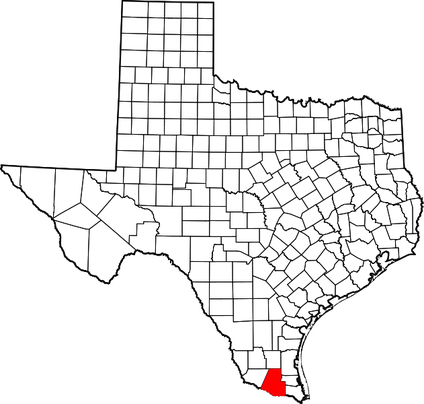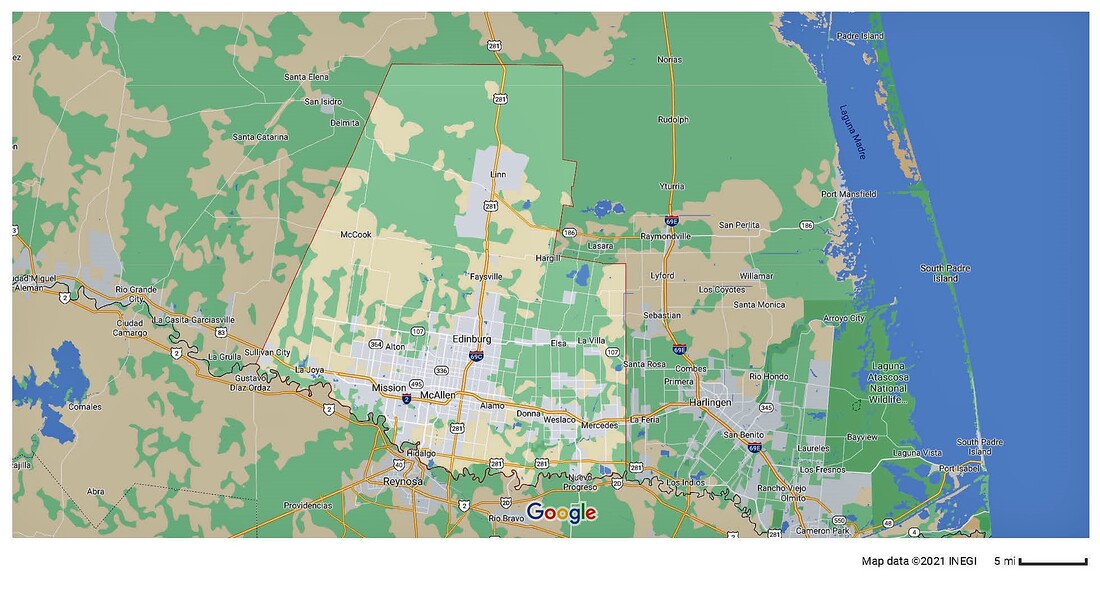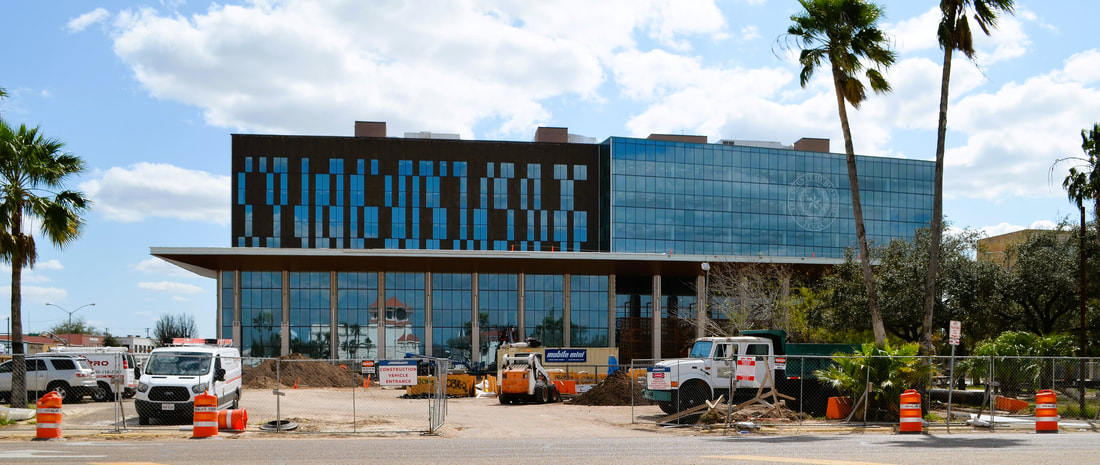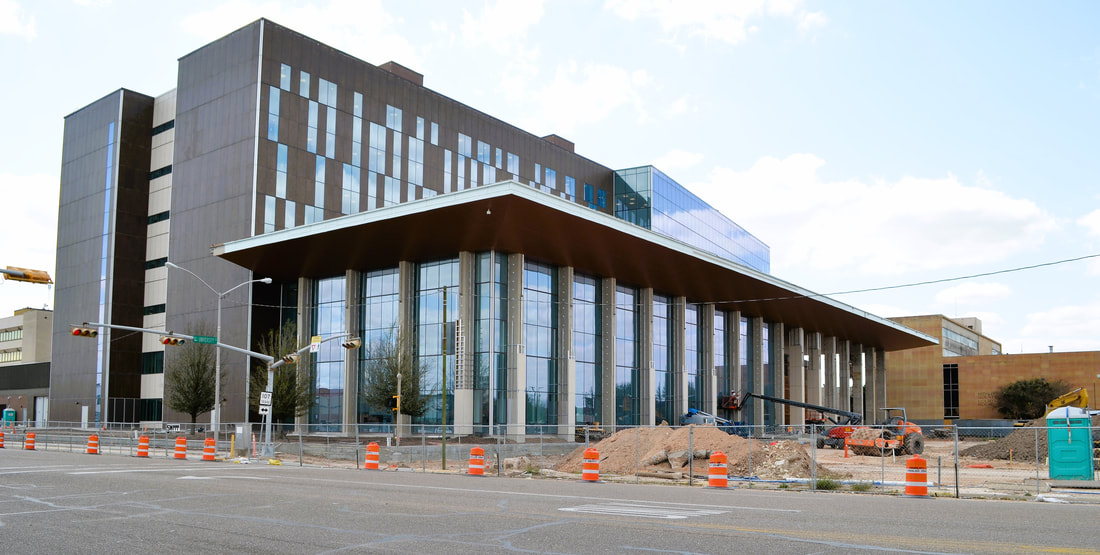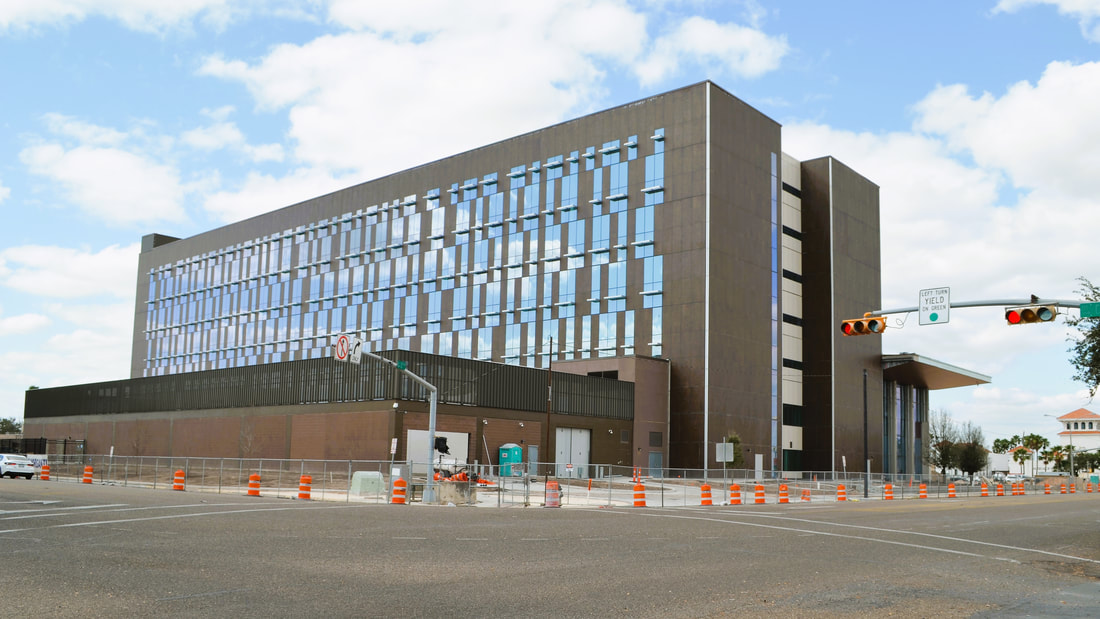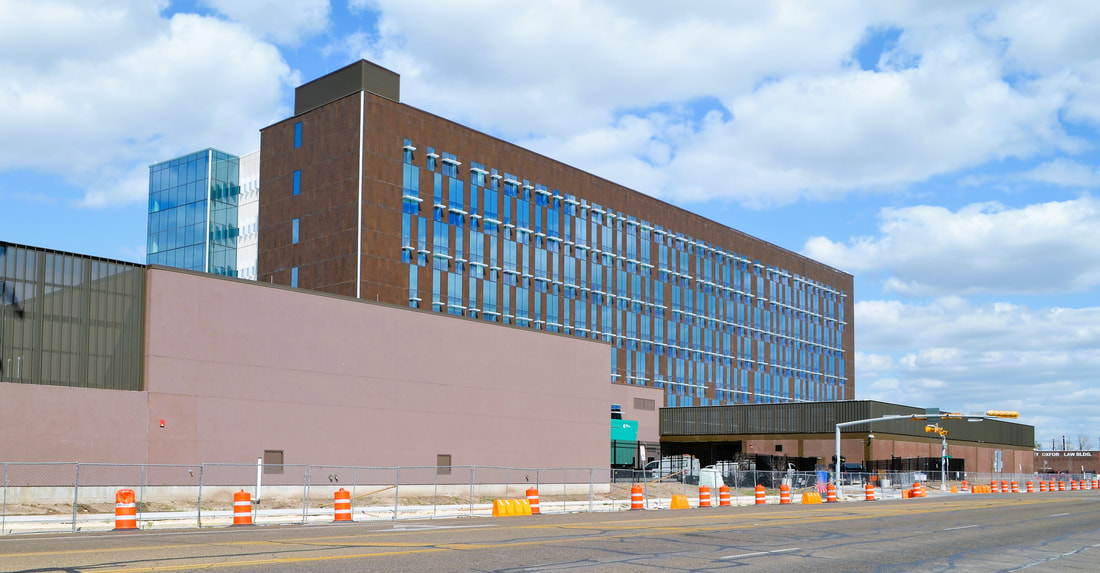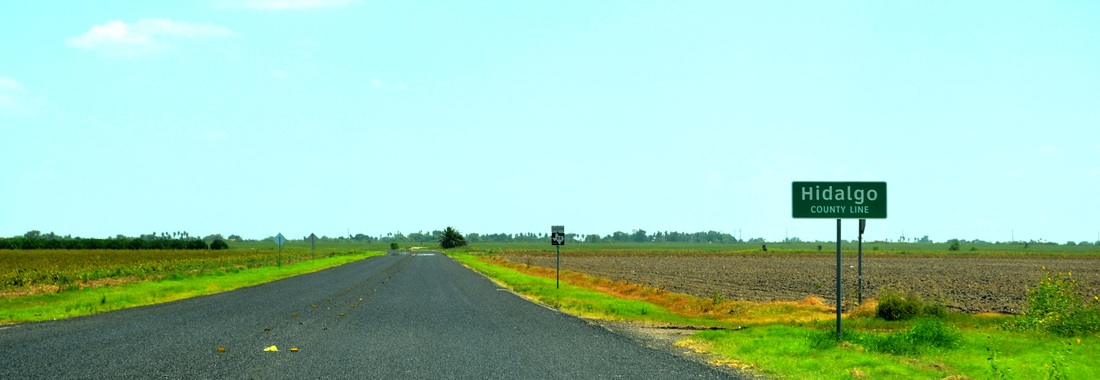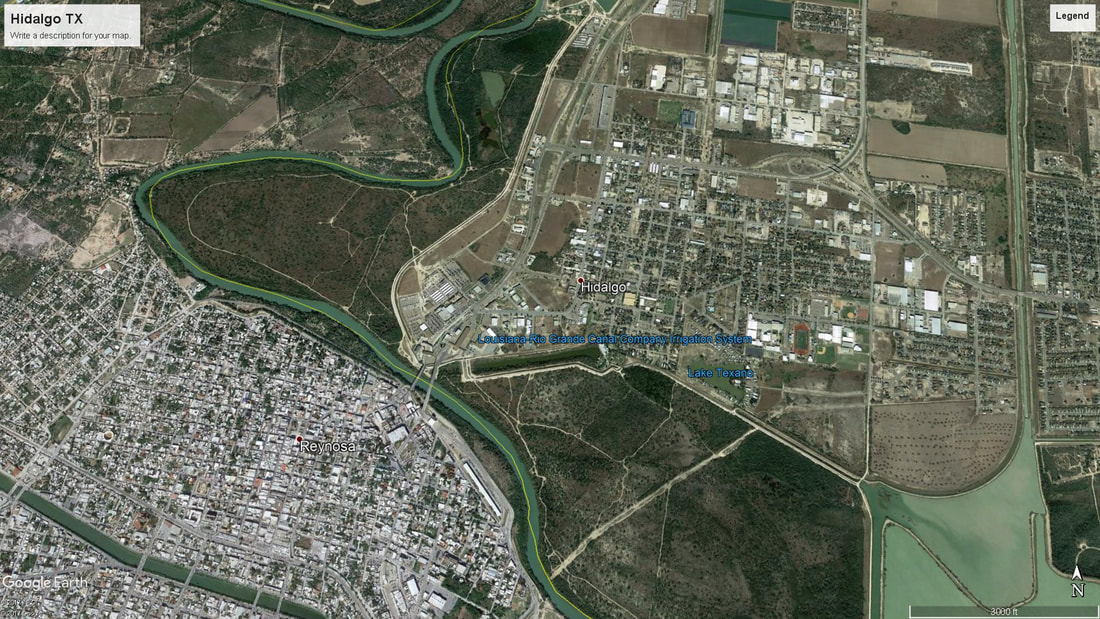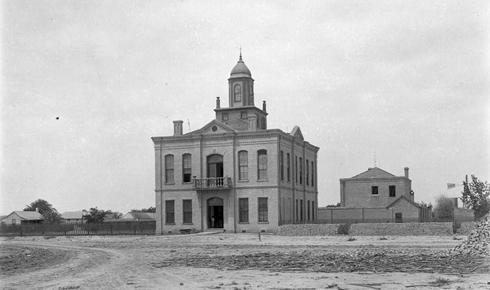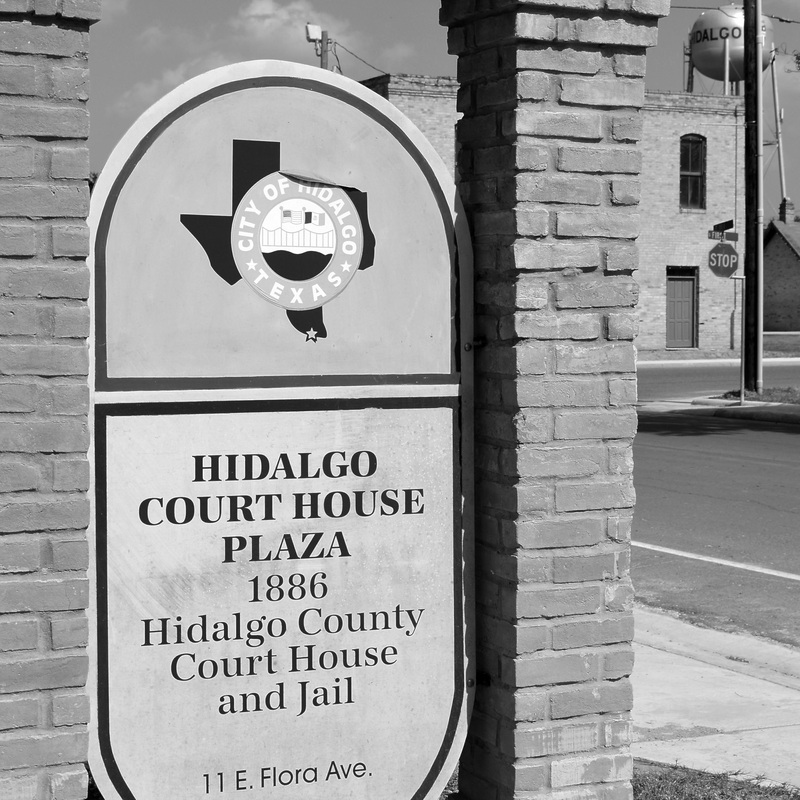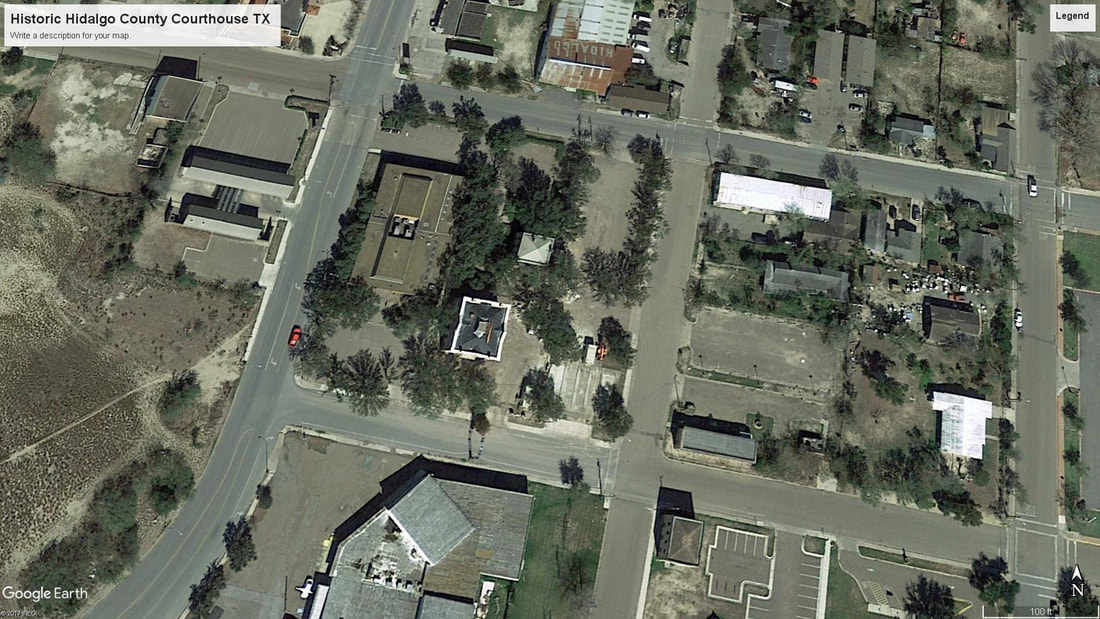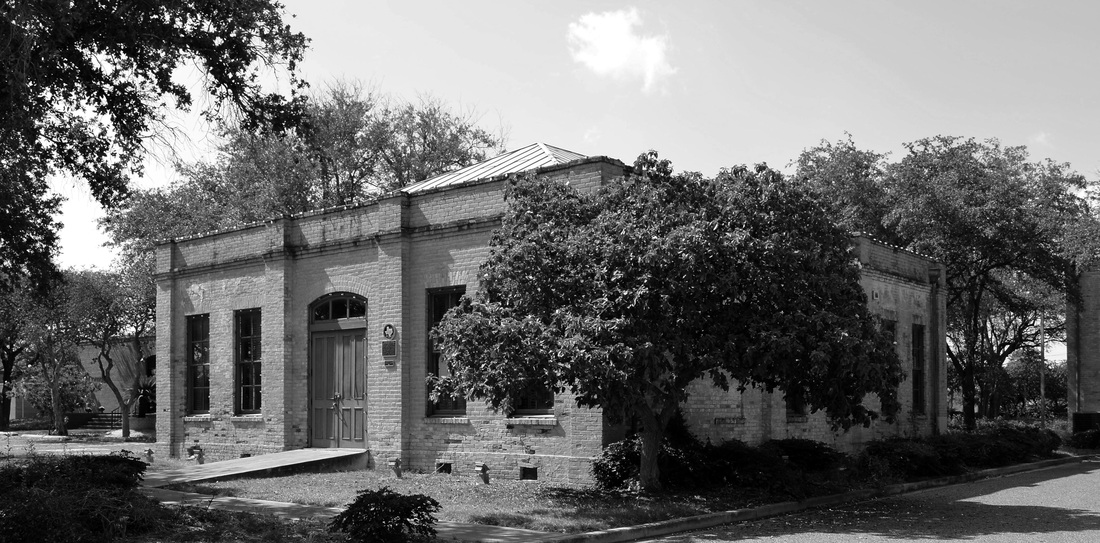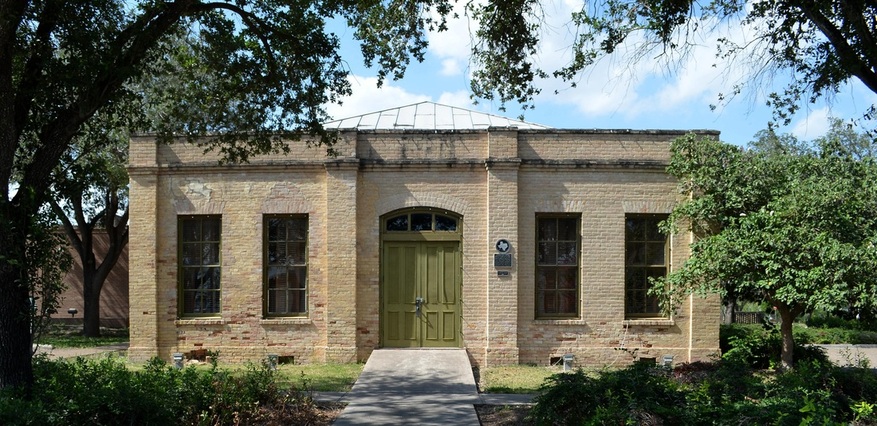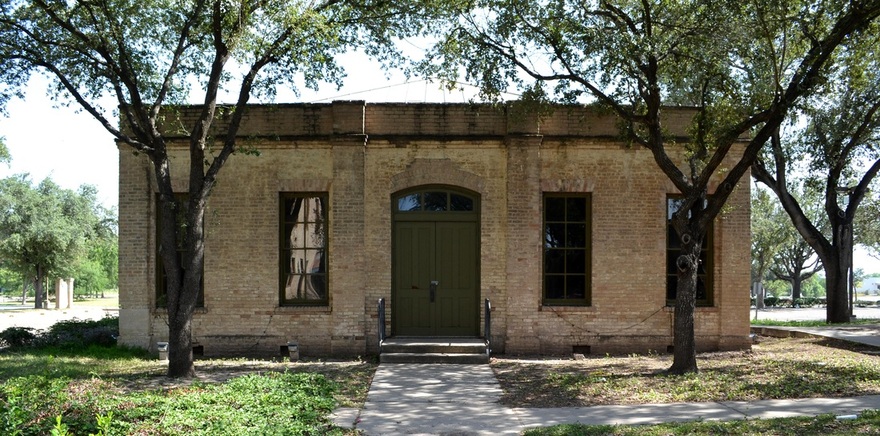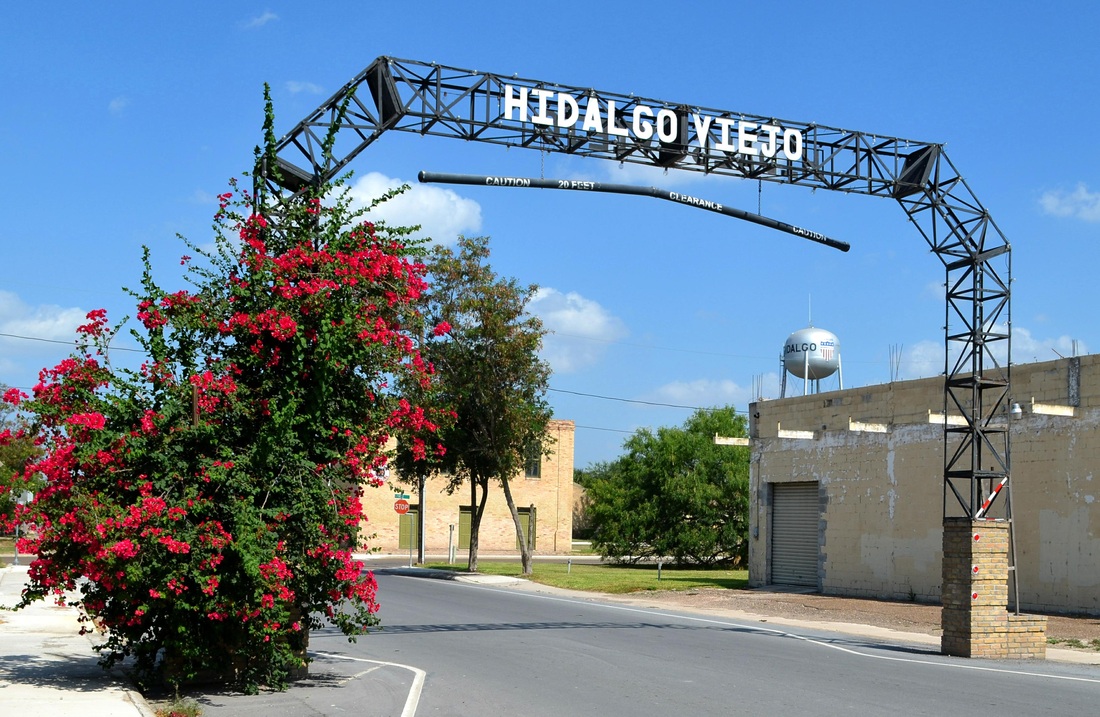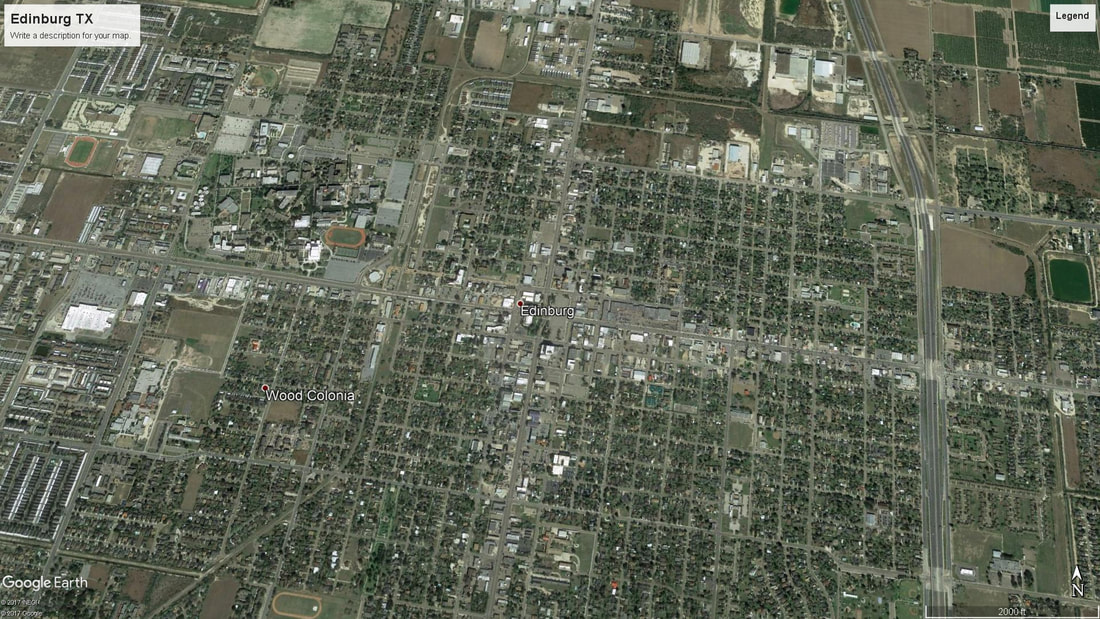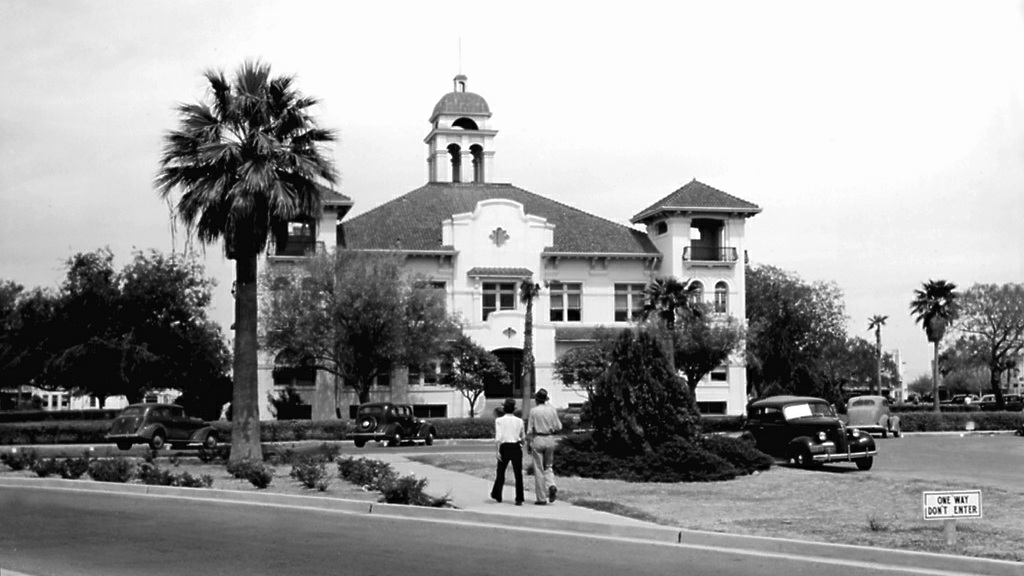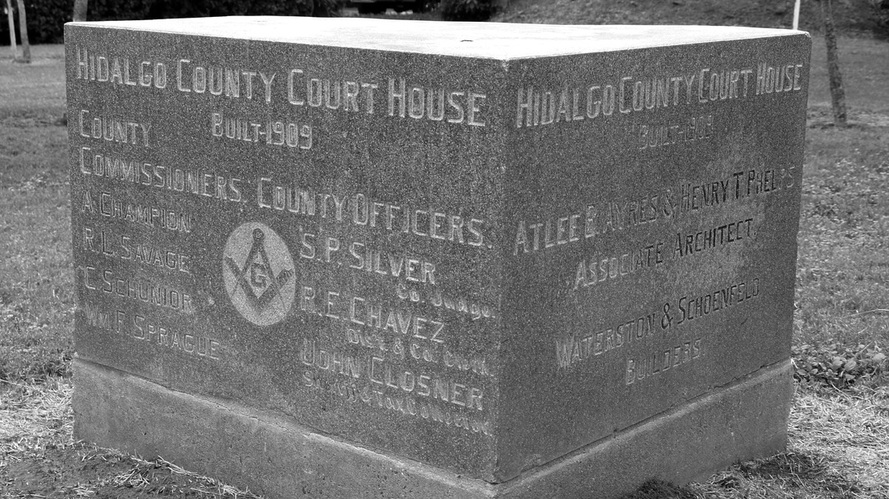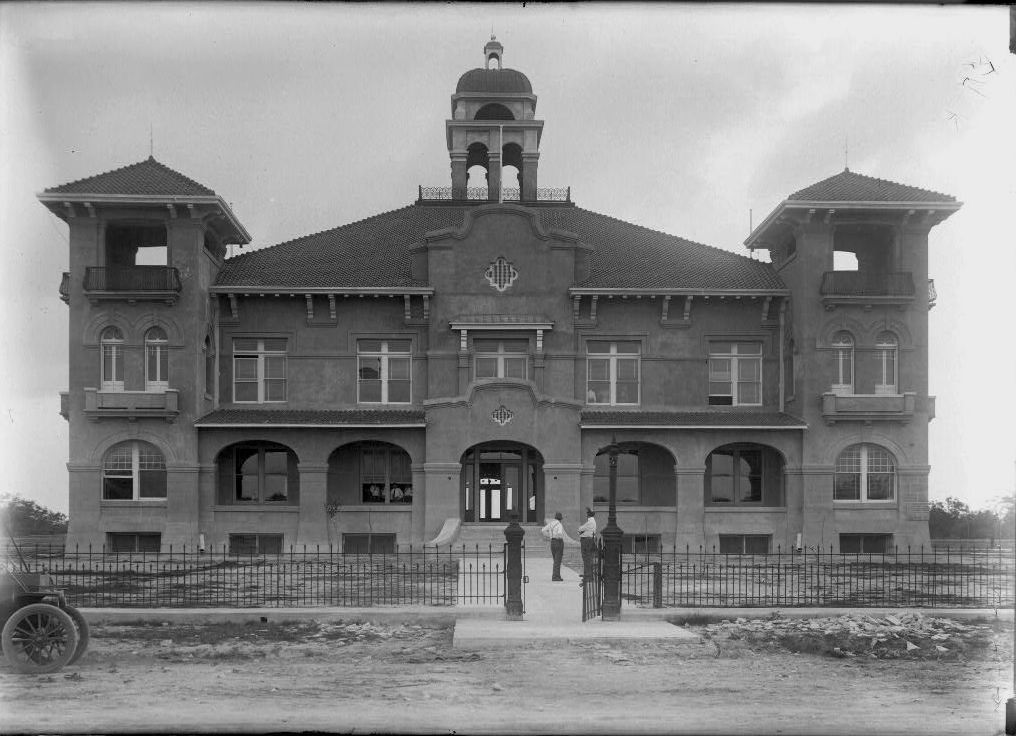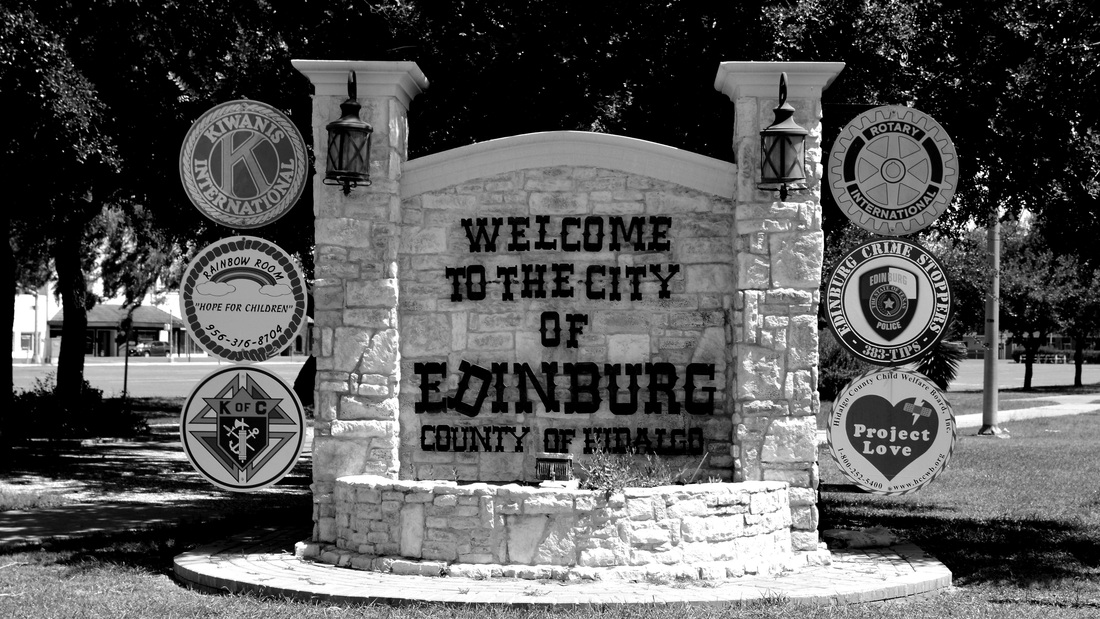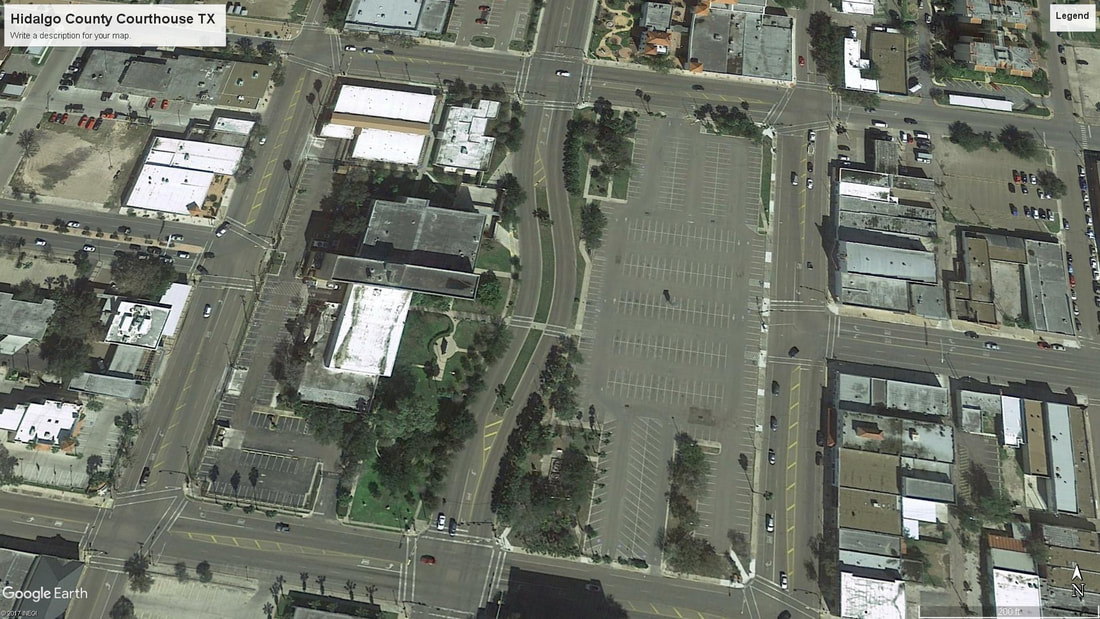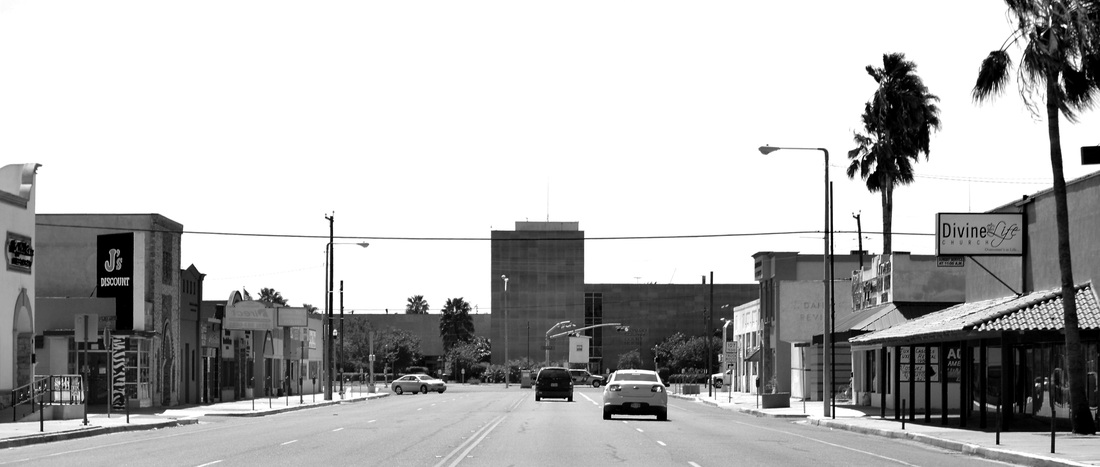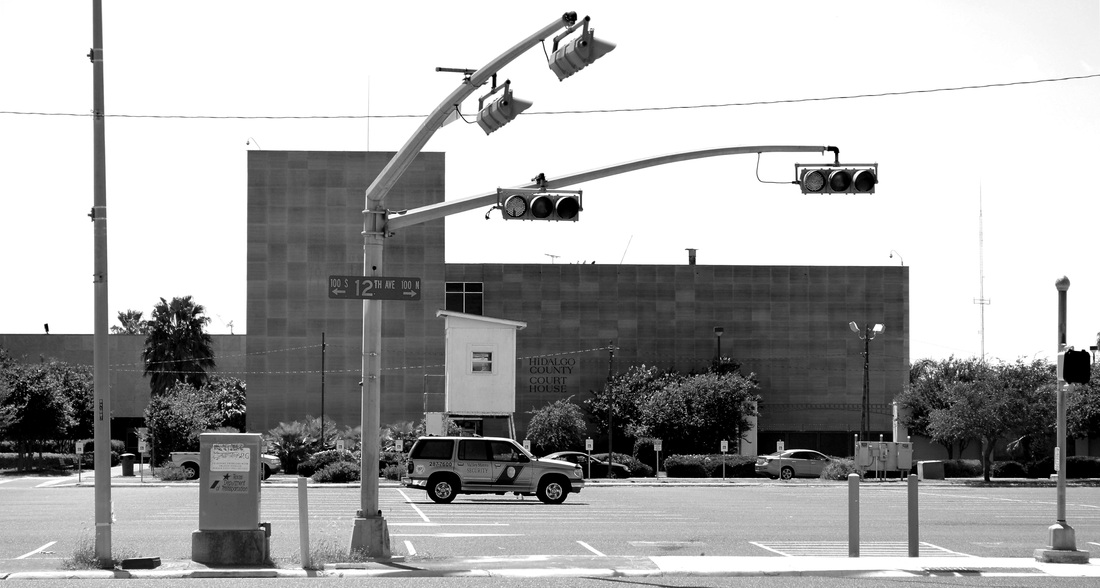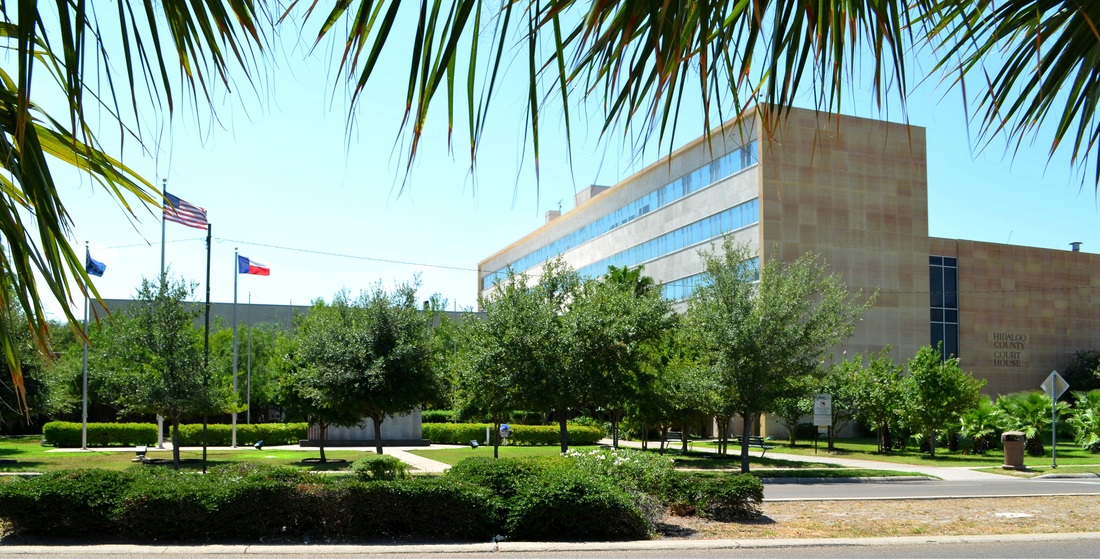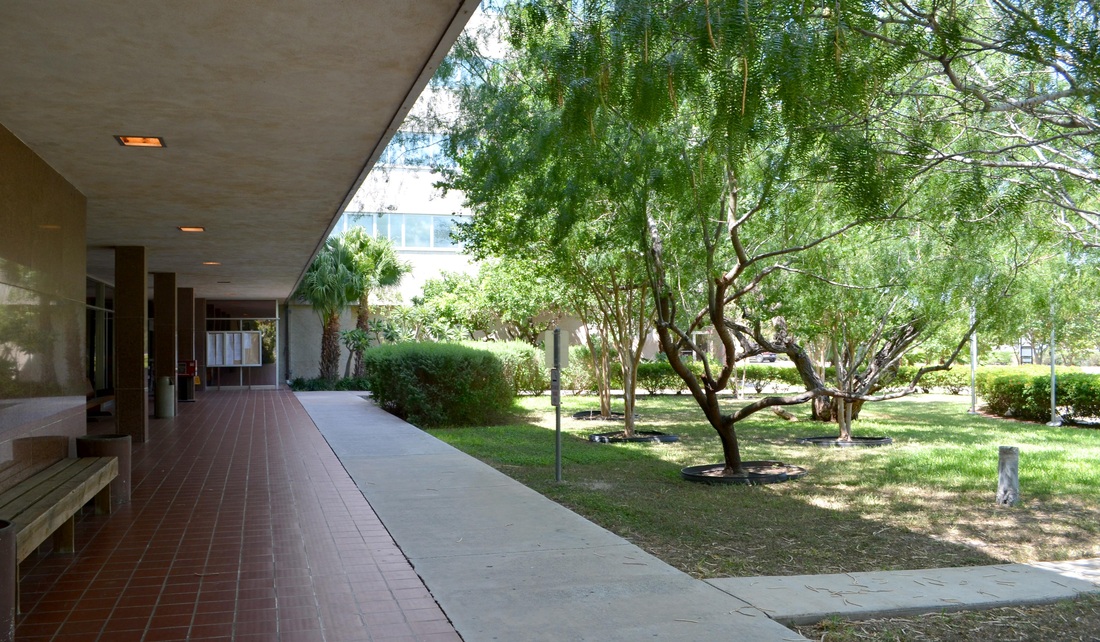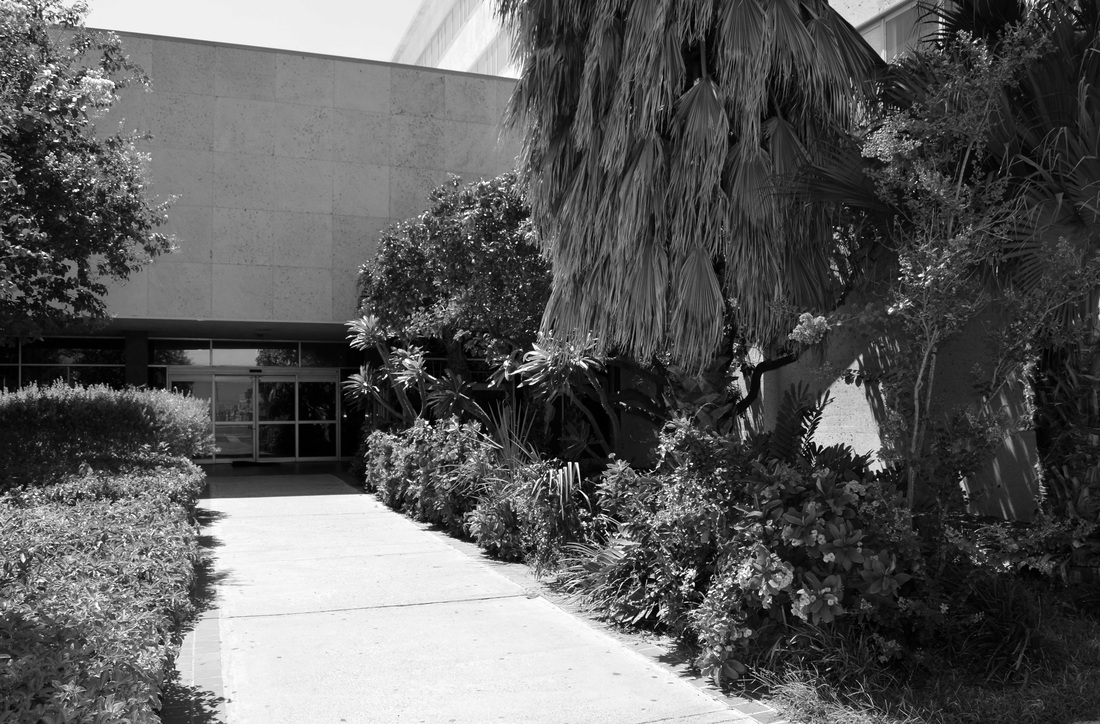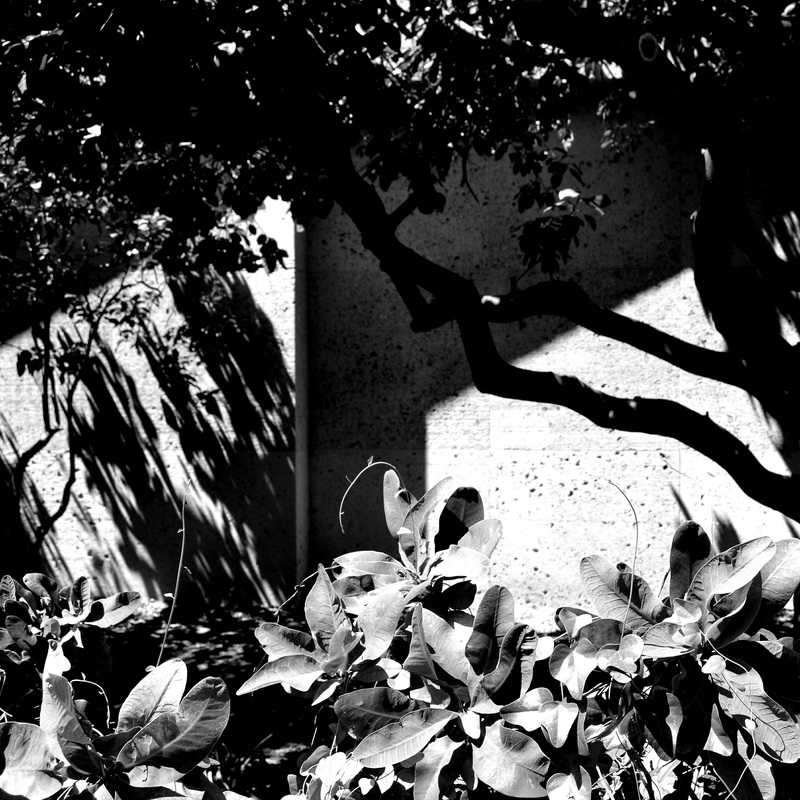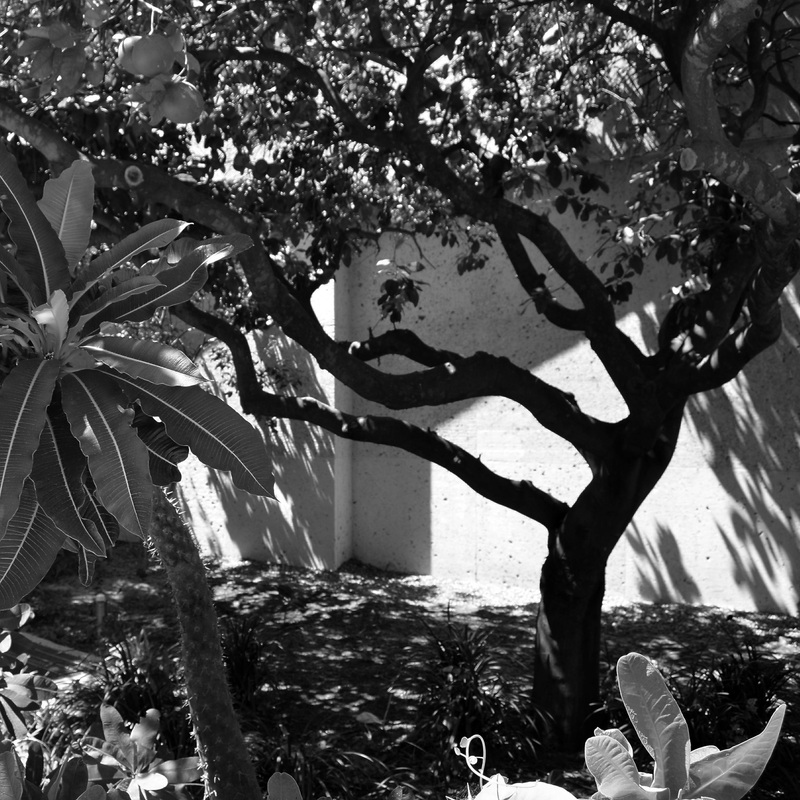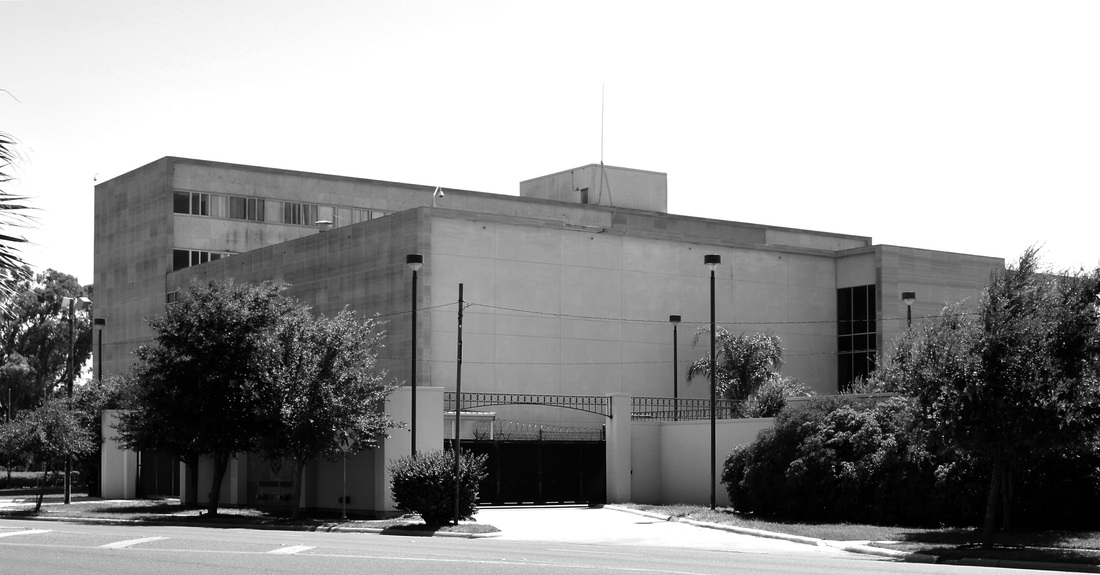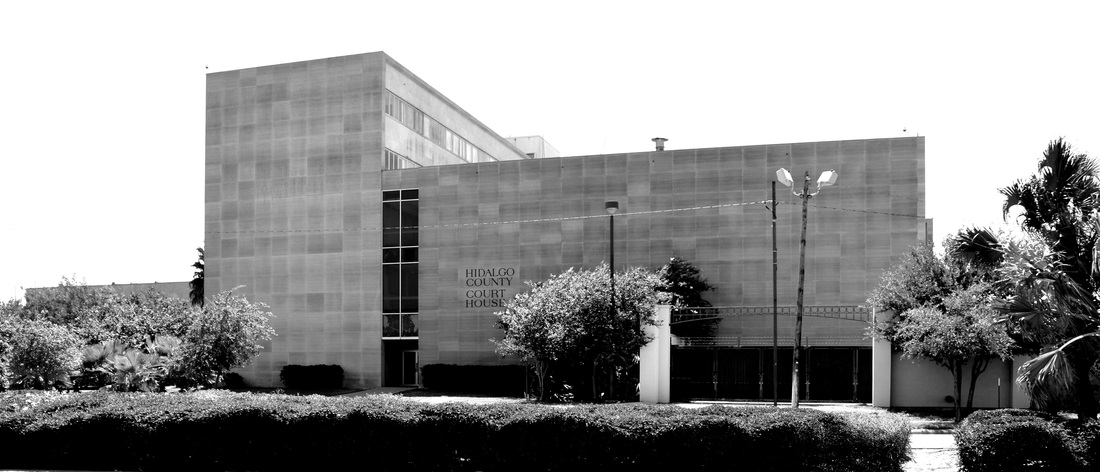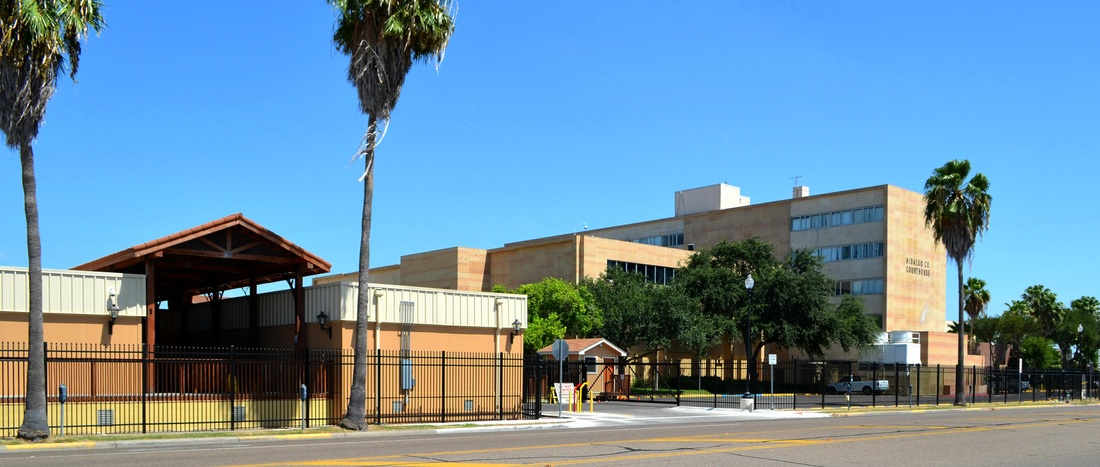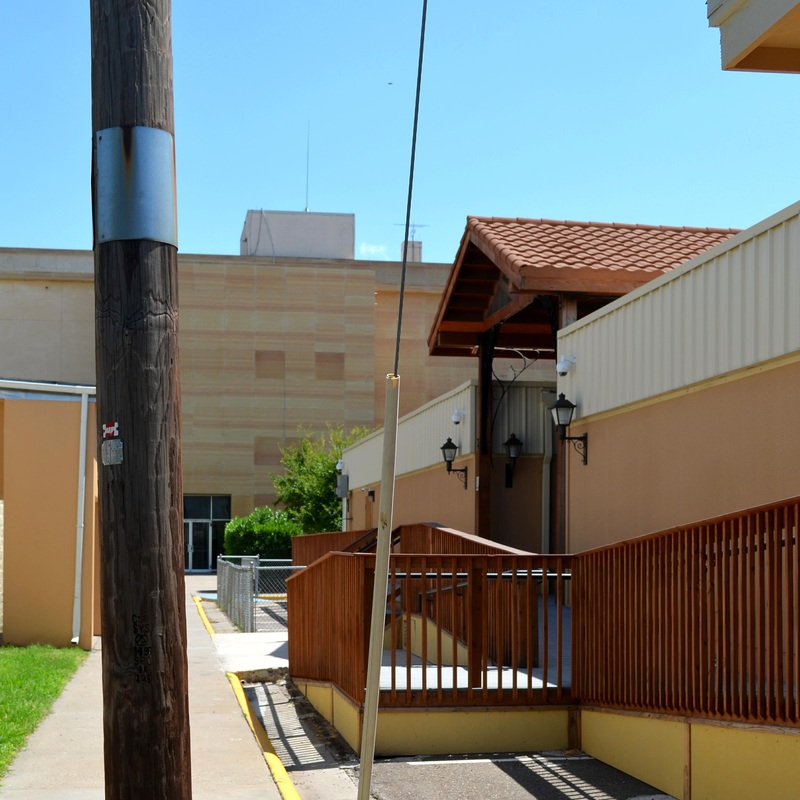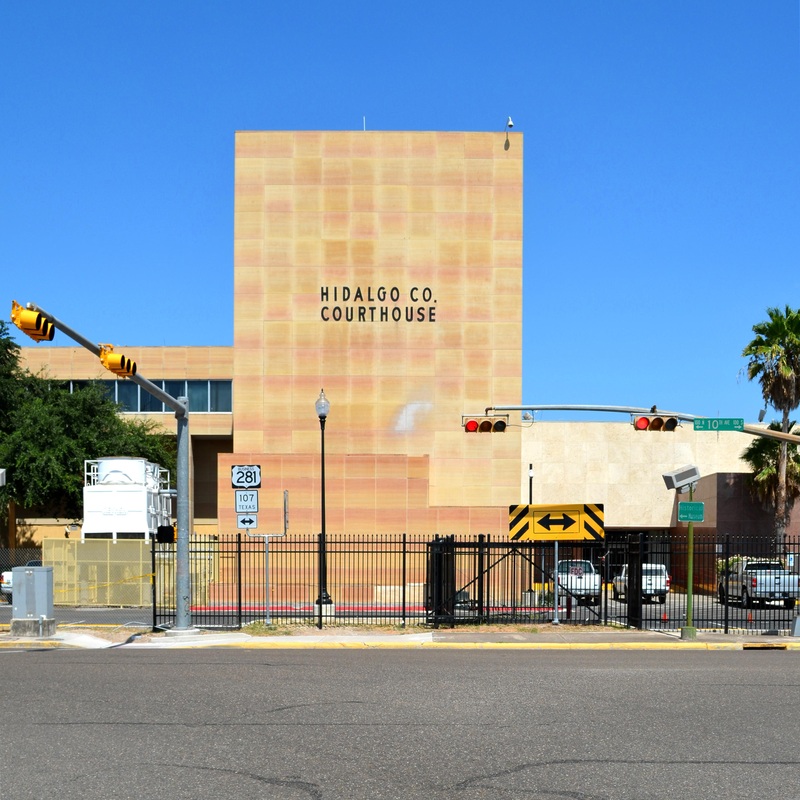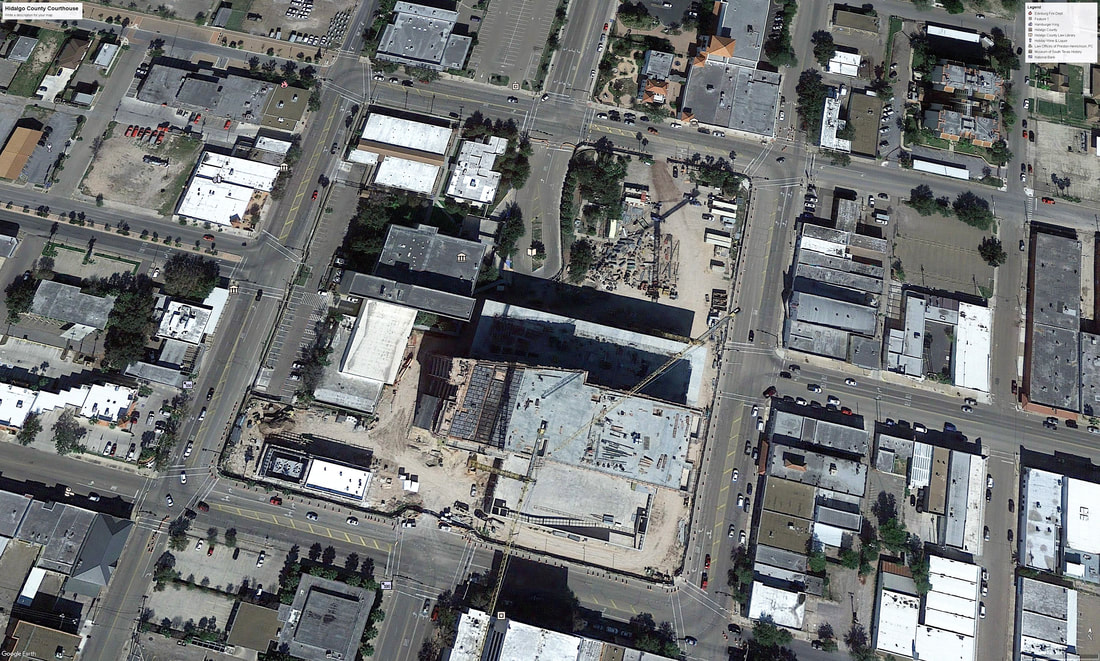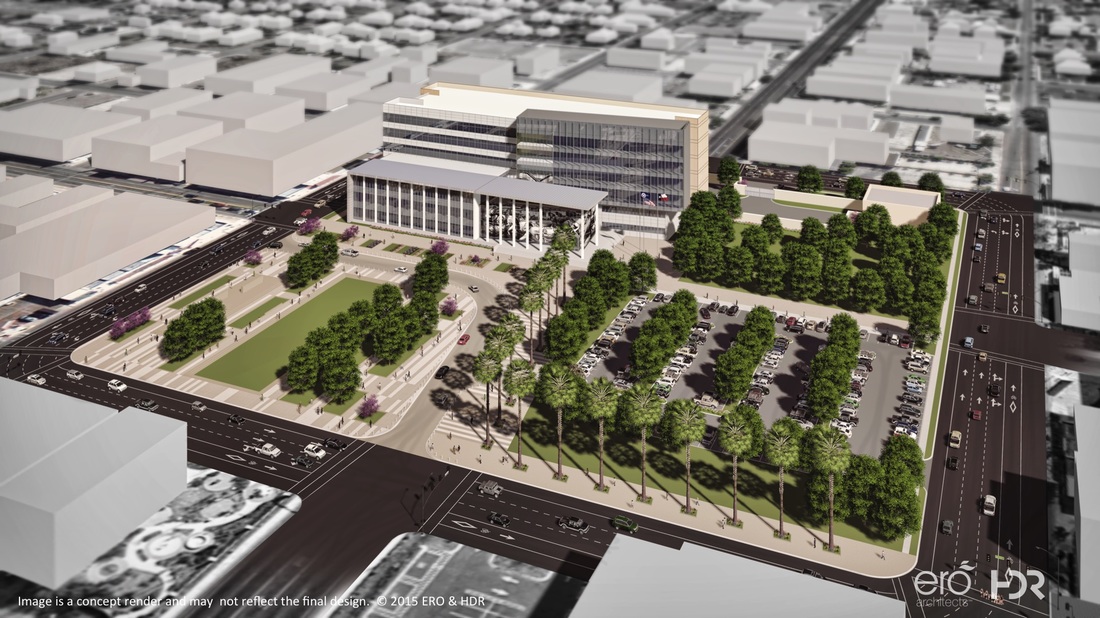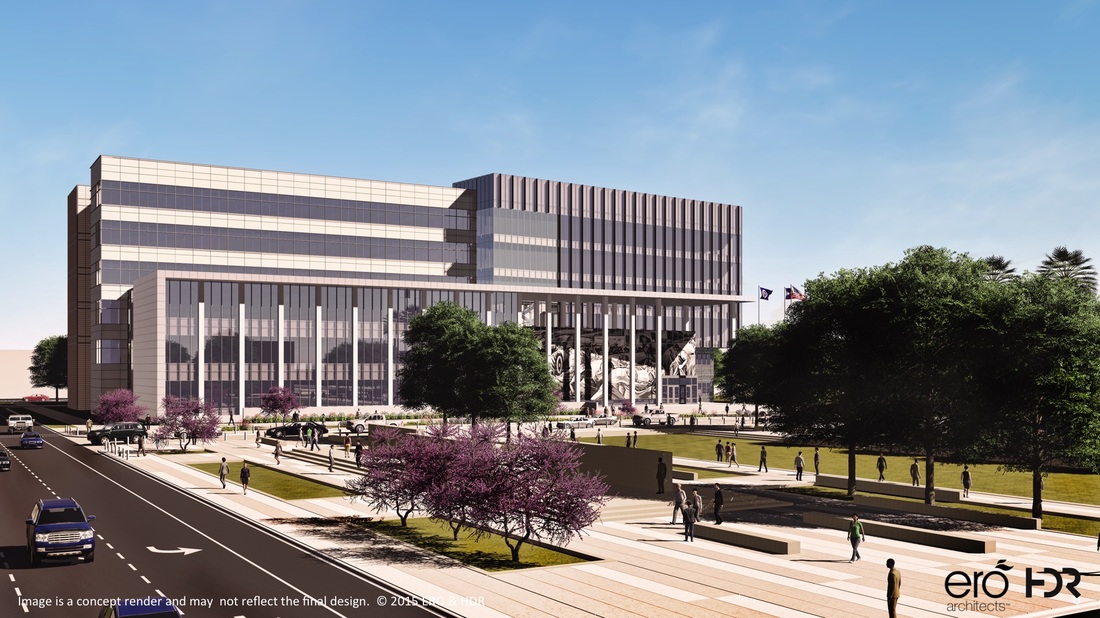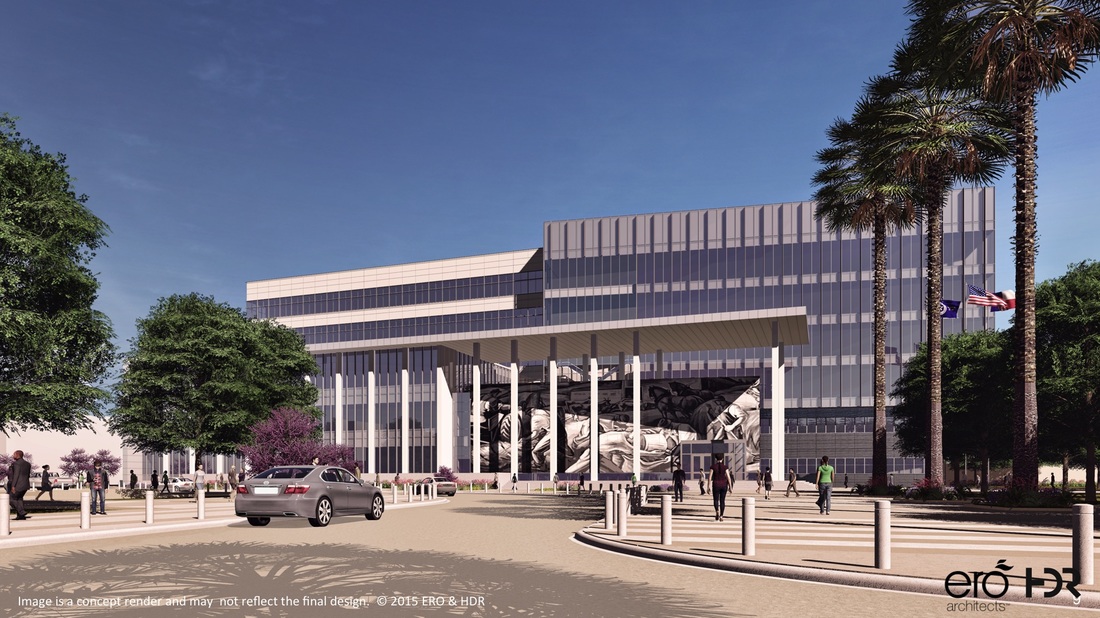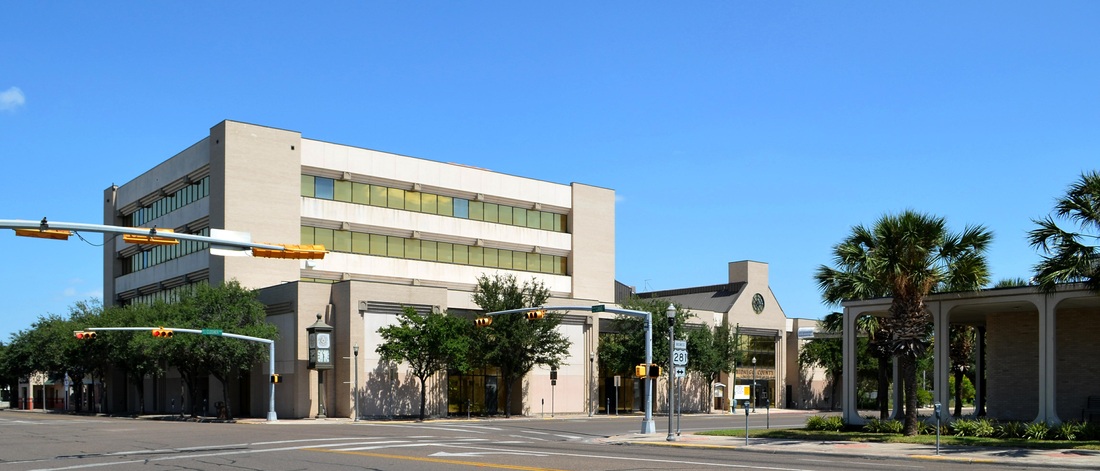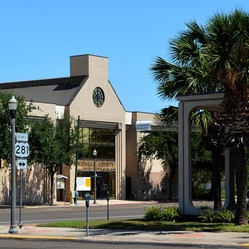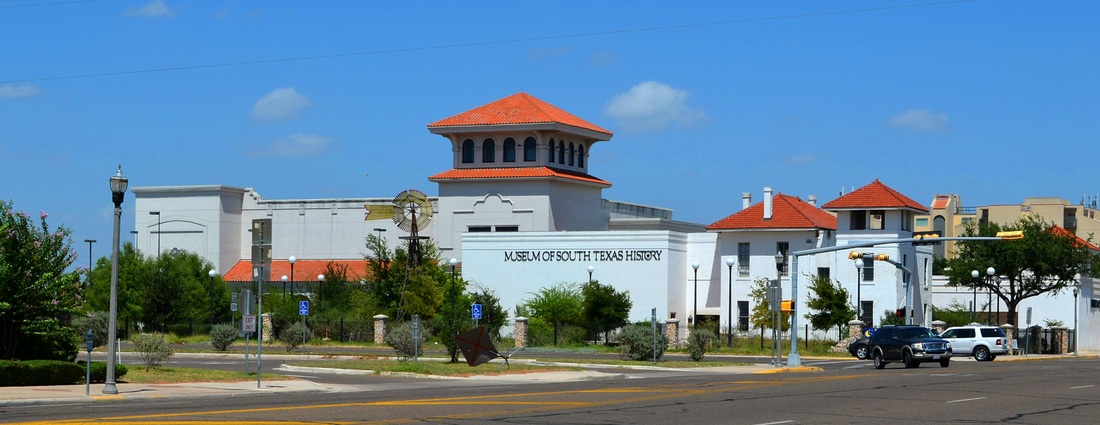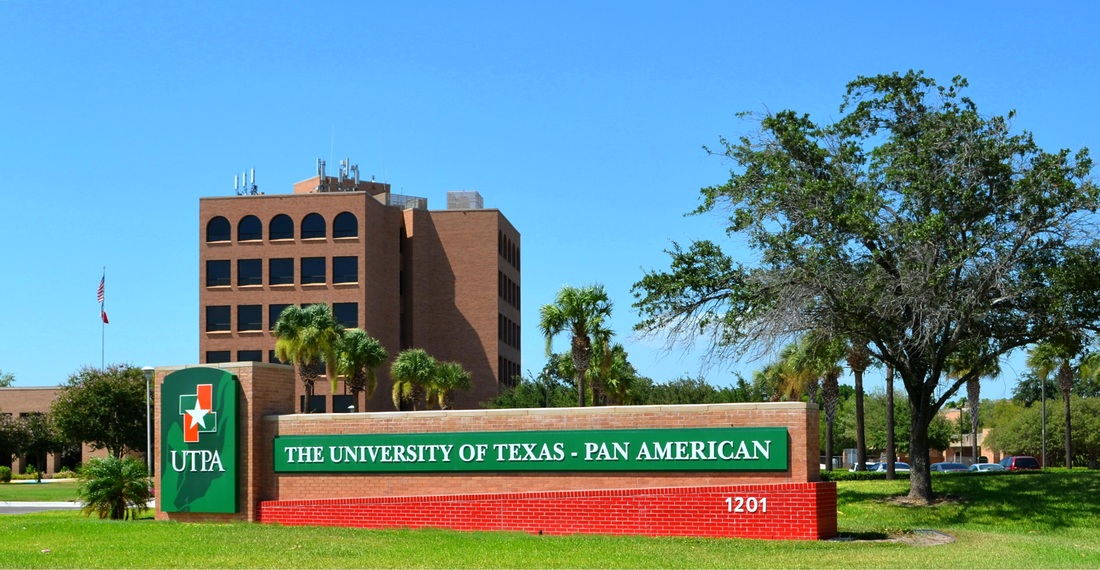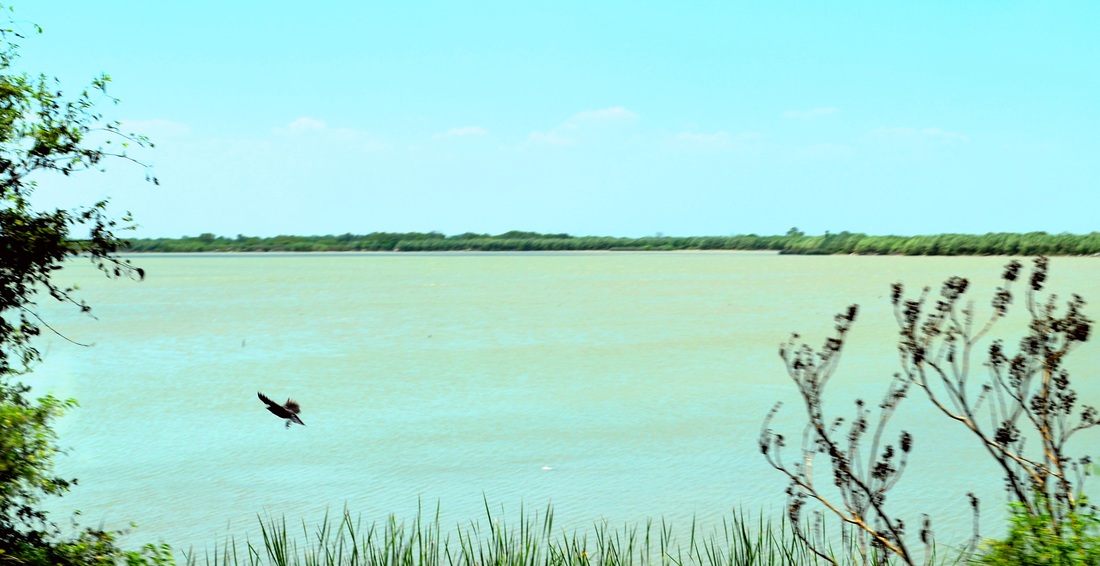025 of 254: Hidalgo County Courthouse, Edinburg, Texas. County Population: 861,137
|
"Hidalgo County, in South Texas, is bordered by Cameron County, Willacy County and Kenedy County on the east, Brooks County on the north, Starr County on the west, and Mexico on the south. Hidalgo County comprises 1,596 square miles of the Rio Grande delta. Its elevations range from forty to 200 feet.
"A settlement called La Habitación, also known as Rancho San Luis or San Luisito, was established north of the river at the site of present-day Hidalgo, Texas, in 1774. By 1836 area farmers had a thriving economic base that allowed them to export their cattle and cattle by-products into Mexico. With the outbreak of the Texas Revolution the area became disputed territory, Mexico considered it part of Tamaulipas, and Texas claimed it as part of its southern border. During the Mexican War, Zachary Taylor laid out the Old Military Road to supply his men in northern Mexico. By 1850 about thirty-nine ranches were in operation in what later became Hidalgo County. "Hidalgo County was part of the disputed territory during the Mexican War. After the Treaty of Guadalupe Hidalgo of 1848 the area became part of San Patricio County. In the same year the region was further subdivided and became part of Cameron County. Hidalgo County was formed in 1852 and named for Miguel Hidalgo y Costilla, who gave the "cry for Mexican independence" from Spanish rule." Alicia A. Garza, "HIDALGO COUNTY," Handbook of Texas Online I visited Hidalgo County and photographed the courthouses in Hidalgo and Edinburg on September 25, 2009 and July 27, 2014. |
August 11, 2023 (!)
“This is one of the largest and most needed projects in the County,” said Hidalgo County Judge Richard F. Cortez.
“Unfortunately, overcoming hurdles is common with these types of projects. We will push forward and clear the path to complete this project, and we appreciate everyone’s understanding and patience. We will get to the finish line.”
Construction of the new courthouse started in January 2019. It was supposed to open in late 2021 or early 2022. It is still not open.
Though a press release, Hidalgo County’s public relations office explained the reasons for the delay:
“In an effort to provide the public with the latest information on the Hidalgo County Courthouse project, Hidalgo County is providing a list of events that have transpired over the last two years.
“In 2018, Hidalgo County hired Morganti Texas to build the seven-story, 344,000-square-foot building designed to accommodate 31 courtrooms; the Hidalgo County Bar Association; a central utility plant; a security screening area; parking spaces; approximately a 700-person temporary detention center for inmate defendants; and District and County clerks’ offices.
“Jacobs Engineering was hired as the project manager to protect the interests of Hidalgo County. A project manager’s role is to be the Owner’s representative, and in this case, oversee the courthouse project and its respective superintendent(s) from conception to the finished structure, as well as communicate with both the construction professionals and the client, Hidalgo County.
“Despite the pandemic, construction of the courthouse was initially on budget and within the time limit allotted by contract to complete the project. However, in December of 2021, when the project was approximately 85 percent complete, the contractor Morganti requested additional time and committed to reaching substantial completion of the project by May 2022. Despite their commitment, Morganti failed to reach substantial completion and requested yet another extension until August 2022. Hidalgo County agreed to the prior extensions, but unfortunately progress on the project had become dramatically slower, with increased challenges in dealings with Morganti from May 2022. Morganti did not reach substantial completion in August, and they sent another request for an extension until October 2022, which the County contested.
“As a consequence of exterior envelope and several other system testing failures in November 2022, Hidalgo County hired an independent engineering firm to look into concerns regarding construction issues that are related to the exterior envelope of the current structure.
“That firm has provided an assessment report that has identified construction issues in the exterior envelope of the courthouse that must be addressed. While the interior of the courthouse is closer to completion, and despite the County’s effort to get Morganti to honor the contract and complete the project, Morganti continues to fail the County and has essentially stopped working on the project. In addition, the County is disputing Morganti’s billings, which the County contends are in violation of express provisions in the contract.
“The County of Hidalgo continues to assess the condition of the building in order to take additional appropriate and necessary actions to complete the New Courthouse project. That includes looking at any and all available remedies under the law and the current contract.
““This is one of the largest and most needed projects in the County,” said Hidalgo County Judge Richard F. Cortez. “Unfortunately, overcoming hurdles is common with these types of projects. We will push forward and clear the path to complete this project, and we appreciate everyone’s understanding and patience. We will get to the finish line.””
“This is one of the largest and most needed projects in the County,” said Hidalgo County Judge Richard F. Cortez.
“Unfortunately, overcoming hurdles is common with these types of projects. We will push forward and clear the path to complete this project, and we appreciate everyone’s understanding and patience. We will get to the finish line.”
Construction of the new courthouse started in January 2019. It was supposed to open in late 2021 or early 2022. It is still not open.
Though a press release, Hidalgo County’s public relations office explained the reasons for the delay:
“In an effort to provide the public with the latest information on the Hidalgo County Courthouse project, Hidalgo County is providing a list of events that have transpired over the last two years.
“In 2018, Hidalgo County hired Morganti Texas to build the seven-story, 344,000-square-foot building designed to accommodate 31 courtrooms; the Hidalgo County Bar Association; a central utility plant; a security screening area; parking spaces; approximately a 700-person temporary detention center for inmate defendants; and District and County clerks’ offices.
“Jacobs Engineering was hired as the project manager to protect the interests of Hidalgo County. A project manager’s role is to be the Owner’s representative, and in this case, oversee the courthouse project and its respective superintendent(s) from conception to the finished structure, as well as communicate with both the construction professionals and the client, Hidalgo County.
“Despite the pandemic, construction of the courthouse was initially on budget and within the time limit allotted by contract to complete the project. However, in December of 2021, when the project was approximately 85 percent complete, the contractor Morganti requested additional time and committed to reaching substantial completion of the project by May 2022. Despite their commitment, Morganti failed to reach substantial completion and requested yet another extension until August 2022. Hidalgo County agreed to the prior extensions, but unfortunately progress on the project had become dramatically slower, with increased challenges in dealings with Morganti from May 2022. Morganti did not reach substantial completion in August, and they sent another request for an extension until October 2022, which the County contested.
“As a consequence of exterior envelope and several other system testing failures in November 2022, Hidalgo County hired an independent engineering firm to look into concerns regarding construction issues that are related to the exterior envelope of the current structure.
“That firm has provided an assessment report that has identified construction issues in the exterior envelope of the courthouse that must be addressed. While the interior of the courthouse is closer to completion, and despite the County’s effort to get Morganti to honor the contract and complete the project, Morganti continues to fail the County and has essentially stopped working on the project. In addition, the County is disputing Morganti’s billings, which the County contends are in violation of express provisions in the contract.
“The County of Hidalgo continues to assess the condition of the building in order to take additional appropriate and necessary actions to complete the New Courthouse project. That includes looking at any and all available remedies under the law and the current contract.
““This is one of the largest and most needed projects in the County,” said Hidalgo County Judge Richard F. Cortez. “Unfortunately, overcoming hurdles is common with these types of projects. We will push forward and clear the path to complete this project, and we appreciate everyone’s understanding and patience. We will get to the finish line.””
Hidalgo County Courthouse, Hidalgo 1886
|
April 30, 2014: The Texas Historical Commission announced the recipients of the Texas Historic Courthouse Preservation Program Round VIII Grants. Hidalgo, City of: $450,000 grant award for all work to stabilize, restore and preserve the building including masonry restoration, reconstruction of the second floor and tower, and a total interior restoration. The second floor and tower were destroyed in a fire in the early 20th century.
|
The Architect Samuel Wallace (aka S. W.) Brooks (1829-1903) lived in Brownsville, Texas. "His career reflects the spirit that brought other ambitious men such as Charles Stillman and Capt. Richard King from the Northeastern United States to remote South Texas to seek their fortunes. As reported in The Twin Cities of the Border (1893), Mr. Brooks was a Pennsylvanian by birth, but lived in Ohio from the time he was 7 years old until he went to New Orleans and began business there in 1853, as an architect, builder and lumber dealer. He shipped materials for the roof of the Catholic Cathedral in this city, from his lumber yards in 1857, and continued business in New Orleans until 1863. He then came to this section and established himself in Matamoros [Mexico], in the same line of business he had conducted in New Orleans. During a portion of his fifteen years residence in Matamoros, he had interests in both that city and Brownsville, but the latter place gradually demanded his greater attention; as a consequence, he removed to this side of the river in 1878, and has since that time was a permanent resident of this city. Brooks was very active in Brownsville and the Rio Grande Valley in the later 19th Century as an architect, builder and engineer. He is credited with the design or construction of the Fort Brown Hospital and jetties, the Episcopal Church of the Advent, the High School Building, the Browne-Wagner House, the Kowolski-Dennett House, the Frank Armstrong House, the Federal Building, and the Old Cameron County Courthouse, all in Brownsville, as well as county courthouses in Hidalgo and Starr Counties. He held the office of Brownsville City Engineer for eight terms, and held a Patent (No. 120,237 - 1871) for "Improvements in Machines of Making Paving Blocks." The latter was for the manufacture of hexagonal pavers, made locally from the wood of ebony trees (Los Ebanos, as they are called locally)." From the National Register narrative
Hidalgo County Courthouse, Chaplin (Edinburg) 1909
Hidalgo County Courthouse, Edinburg 1954
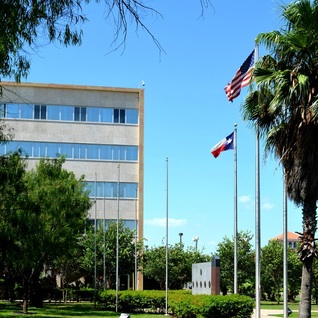
Hidalgo County leaders mull courthouse options (November 07, 2011)
The Hidalgo County courthouse master plan committee hosted its second meeting Monday to discuss future plans for the existing building, an antiquated facility constructed five decades ago for a fraction of the county’s current population. County commissioners created the committee this summer to advise an architectural firm that is developing a plan for expanding and updating the courthouse to meet current judicial needs and functions. Renovating the existing courthouse to comply with standard building regulations will cost $8 million to $10 million, including updating its plumbing, electrical and technological systems. The biggest issue facing the courthouse, though, is a glaring lack of space for operations.Originally built in 1954 to house just three courtrooms, the courthouse has been expanded on three different occasions as county population growth mandated the addition of new courts.
The Hidalgo County courthouse master plan committee hosted its second meeting Monday to discuss future plans for the existing building, an antiquated facility constructed five decades ago for a fraction of the county’s current population. County commissioners created the committee this summer to advise an architectural firm that is developing a plan for expanding and updating the courthouse to meet current judicial needs and functions. Renovating the existing courthouse to comply with standard building regulations will cost $8 million to $10 million, including updating its plumbing, electrical and technological systems. The biggest issue facing the courthouse, though, is a glaring lack of space for operations.Originally built in 1954 to house just three courtrooms, the courthouse has been expanded on three different occasions as county population growth mandated the addition of new courts.
McAllen-based ERO Architects is nearing the completion of the schematic design phase of the new Hidalgo County courthouse. This design phase is the first of three design steps prior to construction. Located in the heart of downtown Edinburg, the new Hidalgo County courthouse can serve as an economic and quality of life cornerstone for the city’s urban vision and goals. The design of the new courthouse offers a modern 21st century judicial complex that is more spacious, secure and accessible. The 10-story building features a glass facade on the north side that provides an abundance of natural light with organized vertical transportation from floor-to-floor. It will accommodate 471,000 square feet of space and supports 24 courts and six additional courts for the future. The three renderings below are shown with the permission of ERO Architects and reflect the schematic design phase. The design is subject to change as it proceeds through the design and constructions documents process.
